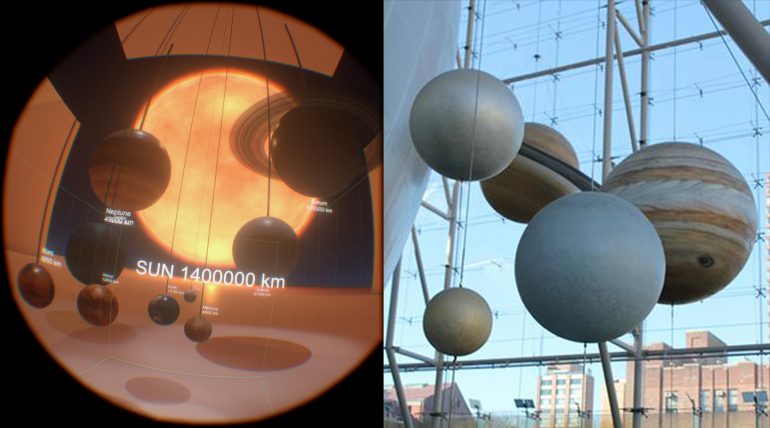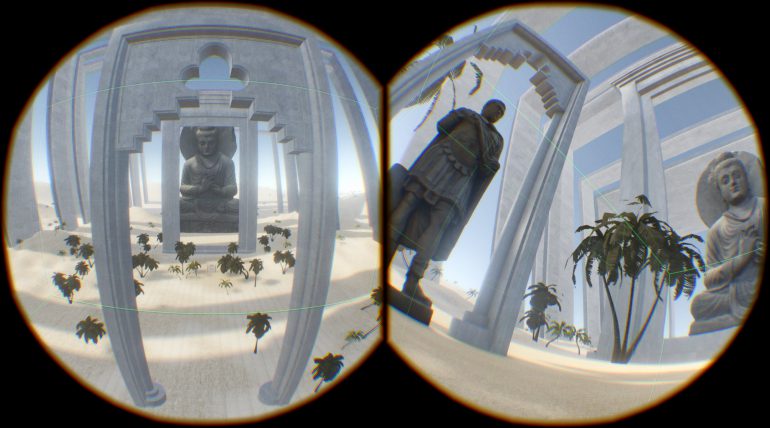
The notion of scale/proportion and its unique perception in VR has been a central question of my research creation project. Accordingly, and also to better understand the affordances of VR in general, three different experiments were carried out during the course of Winter/2018 semester. They were conducted based on ternary model of immersion (SCI) suggested by Laura Ermi and Frans Mäyrä (2005), and the aim was to explore if/how the manipulation of scale and proportions could contribute to three categories of immersion namely; Sensory, Imaginary and challenge-based (ibid);
- Planet 8s (Sensory immersion)
The idea of this experiment was to see if some visceral reactions could be elicited by putting the viewers against scale model of real objects with huge range of size variations, and hence the eight planets of the solar system were visualized and arranged in a museum like setting where the viewer could navigate around and eventually get exposed to the Sun. As this model of immersion depends on the audiovisual execution quality and visual appeal(ibid), some atmospheric effects were also implemented, i.e. GI lighting, post-processing, specular reflections, normal maps, particle systems, etc.

- Peculiar Gates (challenge-based immersion)
The objective of this experiment was to extend the engagement beyond the visceral immersion by instigating what Ermi & Mäyrä refer to as “cognitive challenge” (ibid), To do so, the viewer should be given a more active participation and interaction. That said, it was decided to make the scale of the self-embodiment a playable attribute upon which the theme of a spatial puzzle could be constituted. Player is situated in middle of a desert surrounded by four teleportation gates/windows on each side that face monuments of different sizes. Entering the front and back sides’ gates makes him/her bigger, and stepping into the side gates shrinks the size down.
- Light Sight affective framing (imaginative immersion)
The last experiment was to survey how scale in VR as a substitute of shot-framing in flat-screen mediums could leverage an empathic engagement with the characters; according to Ermi & Mäyrä, such engagement is the pillar of what they call “imaginative immersion” (ibid). Three different sequences of the animation Light Sight (2016) in which the character is in three distinct emotional statuses were chosen. The idea was to see if different scales of the character which consequently demand different viewing angels in VR, could resemble the original shot-framing/angles used in these sequences in order to resonate the affect and empathy.
Toolset: Vive, Unity, SketchUp
